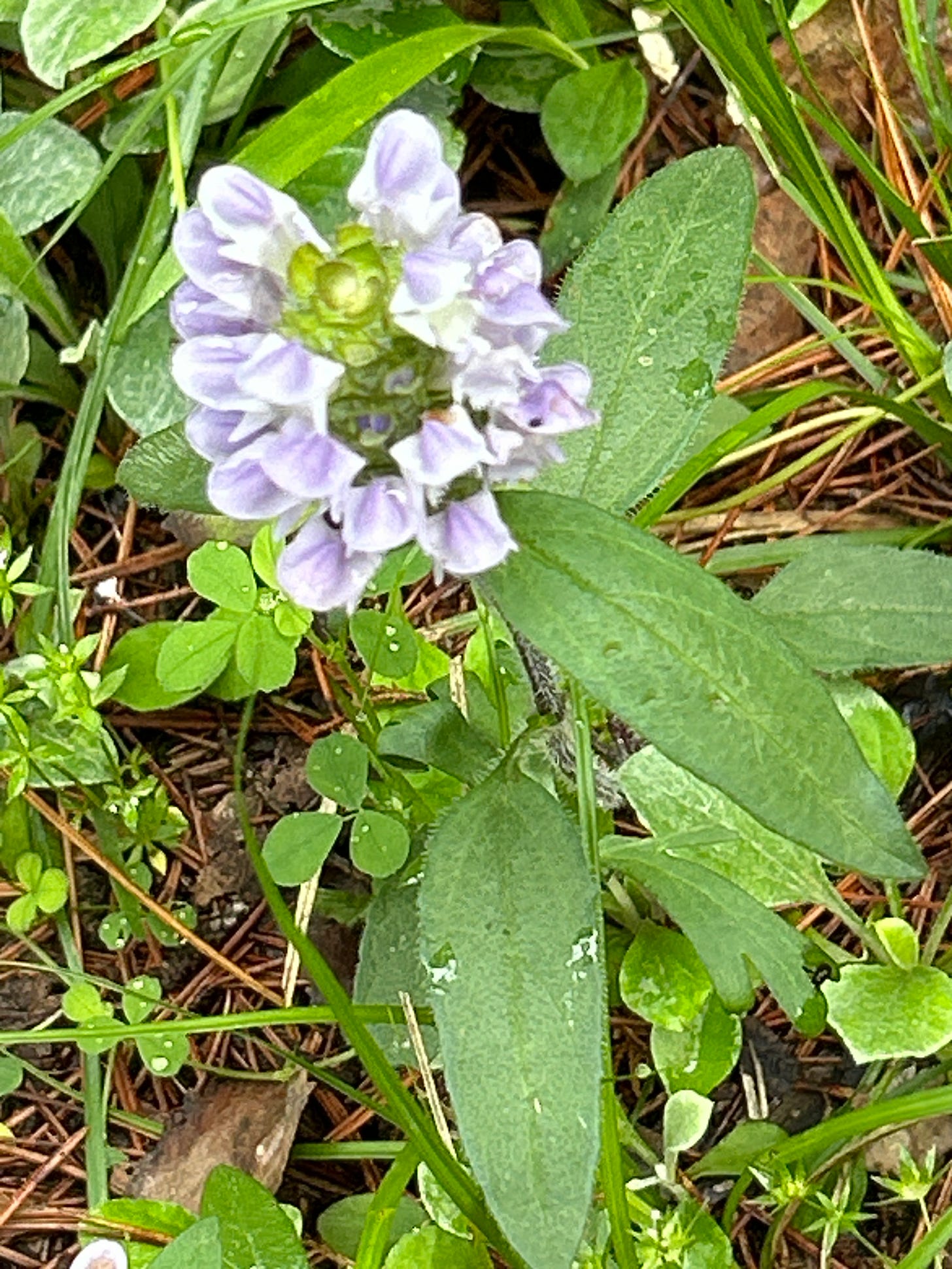Ironically, I photographed this Heal-all at Chickamauga and Chattanooga National Military Park, the site of a bloody Civil War battle. Perhaps the plant can heal what history has not. The park includes a well-mown battlefield, large tracts of forested land, and cedar glades.
When I visited another park, the Great Smoky Mountains National Park, as a child, it was a long drive from our home in Ohio. I saw a land wild with green growth, and I saw it in the mist that gave them their name. For the first time, I saw bears and knew I was in the presence of wild and potentially dangerous beings. I saw a photographer charged by a bear when he threw an apple in hopes of getting a more interesting picture.
I have untold stories from that trip, that I should relate, at least to myself. I can reveal a story of the difficulties in finding lodging when your dad takes the family forth armed with a packet of information from the Chamber of Commerce and no hotel reservations. We stayed at motor courts and one night in an unoccupied motor home. The owner likely overcharged our family.
As a college student on a botany class field trip, I stayed at a group campsite and learned more about these mountains. On a trip to town for dinner, I discovered that Gatlinburg was crowded even in the 1970s.
Today I live much closer to those famous mountains and rarely visit. The mist that gave them their name is now industrial smog, and the landscape is deteriorating, being loved to death by excessive visitation.
The old saying is true, “You can’t step in the same river twice.” Stepping in changes both the river and the observer. Though the mountains of days gone by are not likely to return, they remain alive through the stories of writers such as Harry Middleton and Christopher Camuto. Many other places I have visited are no longer the same as when I saw them, but they remain alive through my words.
In 1991, I visited Everglades National Park as part of a group tour. I prepared by reading The Everglades, River of Grass. I found the Everglades far removed from the world of Marjorie Stoneman Douglas. Today, the wetland is still plagued by water shortages.
I recently discovered the novels of Carl Hiaasen in which the natural world plays an important role. Frequent references to the Everglades add interest to these novels, and he seems genuinely concerned about their well-being. Hiaasen is also a journalist. The natural world may figure in his reporting as well.
Later in 1991, I visited Okefenokee National Wildlife Refuge and it was like a journey back in time. I have heard about threats of destruction by water shortages and mining on adjacent lands, so I am glad I went when I did. I bought a book while I was there, and the stories of Okefenokee remain alive on its pages.
I am slowly bringing to life a nonfiction book with stories of natural areas here in Chattanooga and elsewhere. So long as these stories remain, the places live. A people without stories is an impoverished people.
Meanwhile, I have a poetry book slated to be released on November 1. Information will appear on the website of Walnut Street Publishing closer to the release date.





But what is the purpose of story? It is a way of grappling with life’s realities and find the courage to live another day.